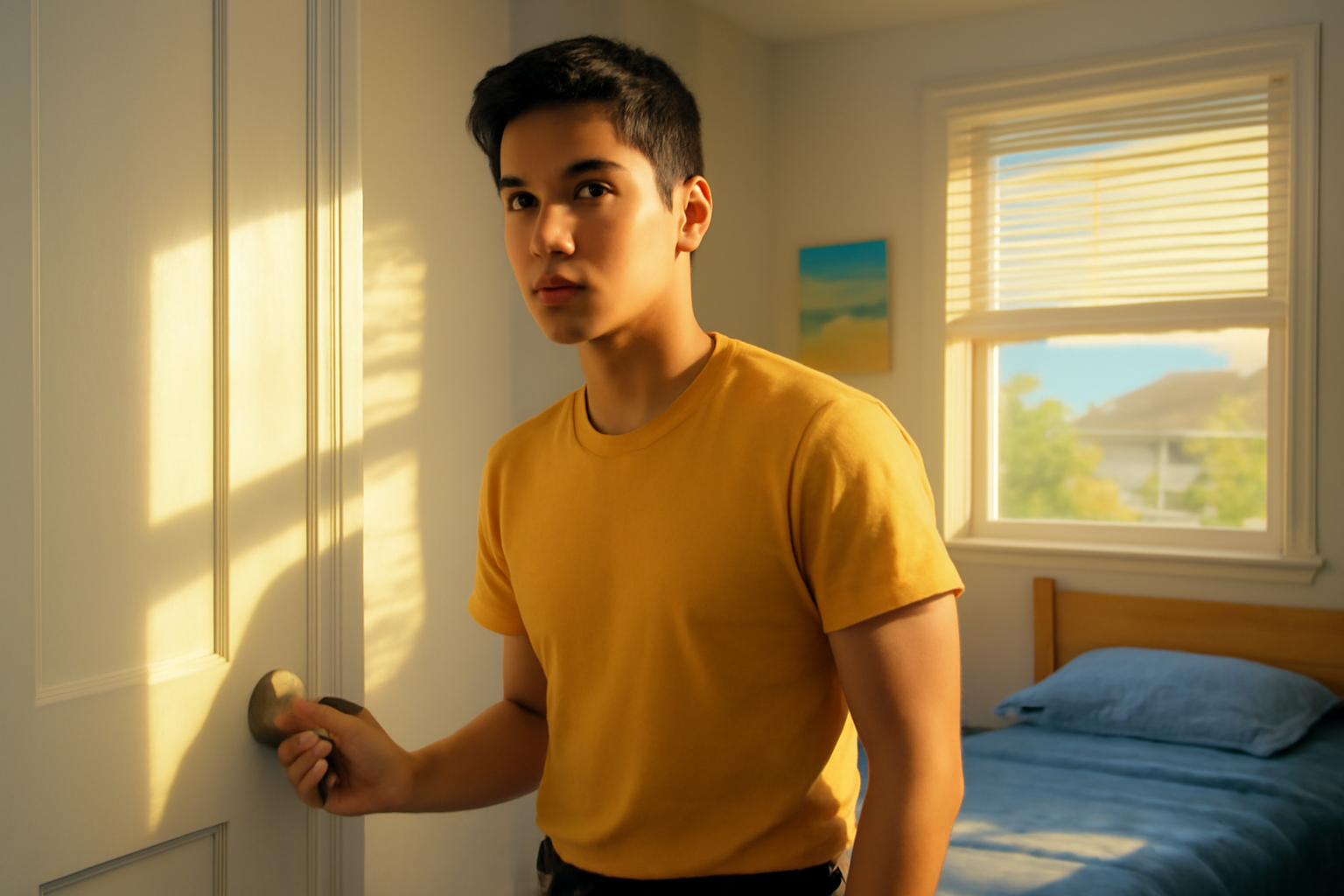
Picture this: it's June 2015, and I'm about readying myself as if I'm on some secret mission.
I gently close my bedroom door at my parents' house in Wolverhampton, in England's West Midlands, and let it click shut softly.
It was right after my first year at university, just a few weeks shy from turning 19. I remember how warm it was, with sunlight casting patterns on my walls through half-open blinds. Slightly paranoid about eavesdropping neighbors, I close my window even though I could really use that summer breeze.
I settle in with my trusty old laptop—it was certainly prone overheating with long sessions spent playing The Sims—and I type YouTube in Google's search bar. I keep a close eye on volume, making sure it barely reaches a soft whisper.
What was I doing that day? Honestly, it's a bit fuzzy. Maybe tidying up my room or going through my things before heading back down south. Perhaps I was getting a leg up on my reading list before September, which I always tackled with nerdy excitement. Anyone who knows me knows I'm that type.
No matter what I was up, Hayley Kiyoko's "Girls Like Girls" was my soundtrack, with its synth-pop vibe and lyrics that felt like they wrapped around me like a comforting hug.
A fresh queer anthem emerges
Before Hayley Kiyoko was hailed as a superstar, author, and filmmaker—dubbed 'Lesbian Jesus' by adoring fans—she was a girl band alum and ex-Disney Channel star trying hard. Back then, she hadn't come out publicly as lesbian.
In a 2019 interview, Kiyoko talked about her anxieties over how people would see her as a lesbian singer, constantly fearing stereotypes and judgment.
"Girls Like Girls" was her first open declaration, born from a personal coming-out moment during a 2014 songwriting session.
"My co-writer asked, ‘What have you never sung about before?' and right then I came out and said I want songs about being bold and daring—stealing someone's girl because that was my dream," Kiyoko remembered.
The song, along with its self-directed video, explored themes like "stealing someone's girl" and beyond, capturing love, desire, and longing, while normalizing what it means when queer people love.
The track resonated powerfully with young queer women. The lyrics, relatable and honest, combined with chemistry in that music video, made "Girls Like Girls" a cultural touchstone.
A landmark in LGBTQ+ visibility
"Girls Like Girls" dropped at a pivotal time in LGBTQ+ rights. While not perfect, there was undeniable forward movement. The song itself became a beacon within LGBTQ+ spaces, offering a lesbian icon they could rally around.
Fans eagerly shared it, and it didn't take long before it went viral, as more queer women found representation in Kiyoko's music. Each release built upon that success.
With her debut album, "Expectations," Kiyoko delivered a sapphic masterpiece, full with themes like yearning and jealousy, all with catchy beats and vibrant synths. This cemented her place as an openly proud music sensation.
Kiyoko didn't stop there. She kept releasing music, wrote a young adult novel, and there's a film version brewing, inspired by "Girls Like Girls."
Back in 2015, however, I was still deep in denial, hiding every trace that hinted at my queer self—especially my love affair with "Girls Like Girls." Now, a decade later, I'm out and proud, looking forward eagerly, hand in hand with my girlfriend, at work on this film adaptation.
No matter if it's 2015 or 2025, Kiyoko's message holds steady: girls like girls, just like boys do. And it truly isn't anything new.
Related Posts
Navigating Healthcare as a Trans Patient: A Personal Experience
**Transgender Healthcare Challenges: A Personal Journey** Understanding healthcare hurdles faced by transgender individuals Life has a funny (and often frustrating) habit. Just when you think society's turning a corner on civil and human rights, reality gives you a wake-up call. Transgender folks, in particular, still face a gauntlet when it comes time simply getting medical care. Sure, there's [...]
Queer Ecologists: Innovators in the Climate Movement
Finding self and solace in nature: Chochotte's path Chochotte grew up in France, not really feeling out-of-place until he did. As a kid, he was just another boy, enjoying life with his mom and sisters, who fostered his love affair with gardening and forest strolls. But then, teenage years hit hard, didn't they? His friends started raising eyebrows at his ‘girly' interests—an obsession with fl [...]
Exploring the Flavorful World of Queer Cuisine
In today's vibrant culinary scene, a couple remarkable books offer a fresh take on dining and its ties with LGBTQ+ culture. These works invite us not only on a journey through flavors but also stories that echo history and identity. Dive in with "What Is Queer Food? How We Served a Revolution" by John Birdsall and "Dining Out: First Dates, Defiant Nights, and Last Call Disco Fries at America's Gay [...]